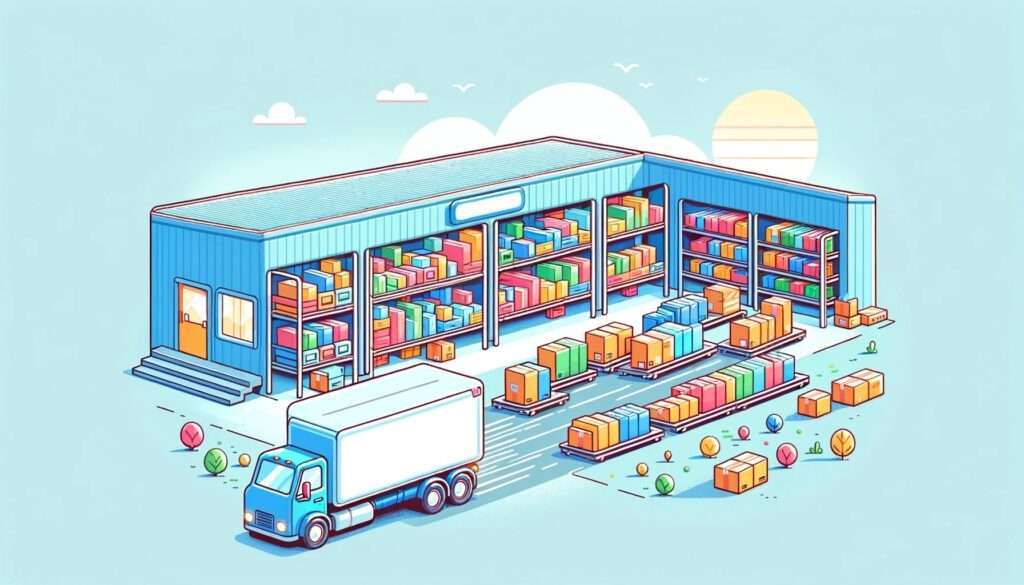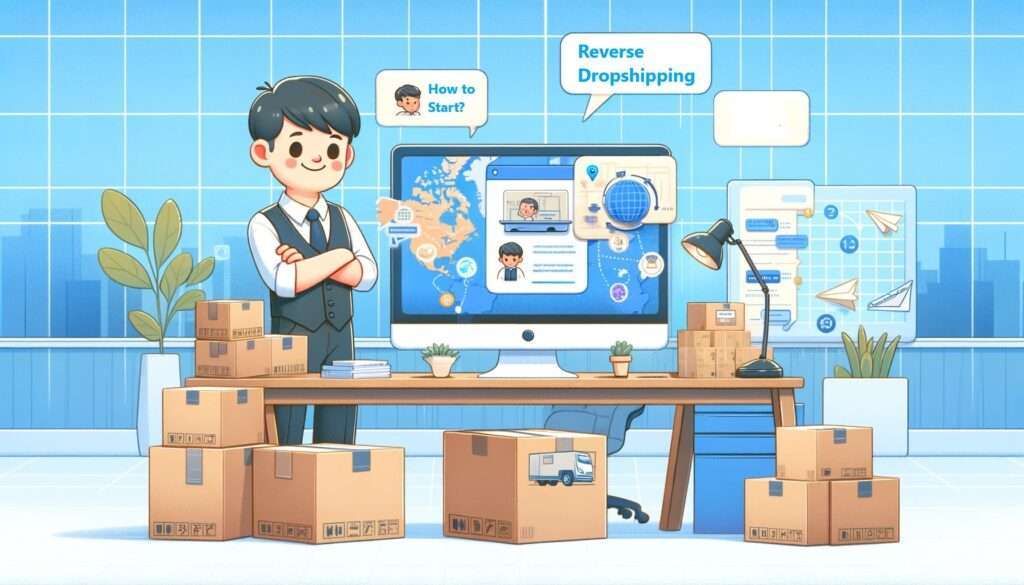
Are you struggling to find a dropshipping model that avoids the saturated markets of traditional methods? A shift towards reverse dropshipping as entrepreneurs seek higher margins and untapped markets. This innovative approach involves importing high-quality products from Western countries to sell in high-demand Asian markets, challenging the typical export-oriented dropshipping.
By leveraging reliable suppliers and a solid e-commerce platform, reverse dropshipping can significantly boost your profit margins. Dive deeper into how this business model works and explore strategies for success in our comprehensive guide.
What is Reverse Dropshipping?
Reverse dropshipping is a distinct business model in the e-commerce sector where entrepreneurs, rather than sourcing cheap products from countries like China, target high-quality, high-demand items from Western countries. This approach can also be seen in building materials industry digitalization, where businesses cater to premium product demands in evolving markets by leveraging unique strategies. This model primarily focuses on selling these products to markets with higher buying power, typically Asian countries. This strategy can lead to a higher profit margin compared to traditional dropshipping, as it capitalizes on the global market’s diverse needs and premium product preferences.
How does the Reverse Dropshipping Model Work?
The reverse dropshipping model represents a shift from traditional dropshipping, focusing on importing high-quality products into countries typically seen as exporters, like China and India. Here’s how it works:
- Business Plan Creation: Entrepreneurs start by developing a detailed business plan that outlines the niche, target market, and operational strategy.
- Sourcing Products: Unlike conventional dropshipping which often sources cheaper goods from countries like China, reverse dropshipping involves sourcing premium products from Western countries.
- Setting Up an Online Store: Using a dropshipping website builder, sellers create an online platform tailored to showcase their unique product range.
- Partnering with Suppliers: The key to this model is establishing relationships with reliable suppliers in the States or Europe who can provide high-quality products.
- Marketing and Sales: The business markets these products in regions where such items are in high demand but not widely available, adjusting strategies to suit local preferences and languages.
- Order Fulfillment: When a customer places an order, the supplier directly ships the product to them, minimizing the seller’s need to manage inventory or handle logistics. By integrating OMS systems, the process is streamlined, enabling real-time tracking, order processing, and seamless communication between the seller and supplier.
Role of Suppliers in Reverse Dropshipping
In reverse dropshipping, suppliers play a critical role, especially since this model involves sourcing high-quality products from regions typically known for exports like the USA and Europe, to be sold in importing countries such as China and India. Here are the steps of how suppliers function in this business model:
- Product Sourcing: Suppliers are tasked with providing unique, high-quality products that are not readily available in the target markets. This requires them to have a thorough understanding of market demands in both exporting and importing countries.
- Quality Assurance: Since reverse dropshipping focuses on premium products, suppliers must ensure consistent quality. This involves rigorous testing and compliance with international standards to maintain the reputation of the business.
- Inventory Management: Although reverse dropshipping minimizes inventory risks by not requiring the retailer to purchase large quantities upfront, suppliers must adeptly manage stock to handle orders efficiently and promptly.
- Order Fulfillment: Upon receiving orders, suppliers are responsible for the timely shipping of products directly to the customer. This includes packaging, handling, and using materials like cloth tape to secure items, as well as managing the logistics of shipping across borders.
- After-Sales Support: Suppliers also need to provide support for returns and exchanges, which involves clear communication and coordination with the dropshipper to ensure customer satisfaction.
Pros and Cons of Reverse Dropshipping
Pros of Reverse Dropshipping
- Access to markets with high demand for quality, foreign products
- Higher profit margins due to unique product offerings
- Less competition compared to traditional dropshipping markets
- Flexibility to explore various niche markets
- Benefits from higher perceived value of Western products in certain countries
- Low inventory costs as it follows the dropshipping model
- Facilitates brand building by focusing on high-quality products
- Expanded global reach allows tapping into new customer bases
- Lower risk of stock accumulation and easier scalability
- Offers differentiation in saturated dropshipping markets
Cons of Reverse Dropshipping
- Challenges in understanding and navigating foreign markets
- Higher shipping costs and longer delivery times
- Need for substantial market research to identify viable products
- Dependence on the reliability of overseas suppliers
- Cultural and language barriers that complicate marketing and customer service
- Compliance with international trade regulations and taxes
- Limited control over the manufacturing and quality assurance process
- Potential legal complexities when dealing with international trade
- Requires more upfront investment in building customer trust
- Risk of return and refund complexities due to international shipping
How to Start A Reverse Dropshipping Business?

To start a reverse dropshipping business, first create a detailed business plan focusing on unique, high-quality products. Research and select a niche market that demands premium items not widely available in target countries like China or India. Partner with reliable suppliers from Western nations known for innovative goods. Set up your online store using a robust website builder and integrate strong e-commerce functionalities. Finally, launch marketing campaigns tailored to the cultural preferences and languages of your target markets, ensuring your brand message resonates effectively.
Dropshipping vs Reverse Dropshipping
| Dropshipping | Reverse Dropshipping |
| Sells low-cost products sourced from suppliers, mainly in Asia. | Focuses on high-quality, high-margin products from Western countries. |
| Generally lower due to high competition and lower-cost items. | Potentially higher as products are unique and less available in target markets. |
| Typically in countries like China. | Mainly in Western countries. |
| Global, often targeting Western countries. | Primarily Asian countries, reversing the usual export-import roles. |
| High due to the abundance of sellers and accessibility of goods. | Lower, serving a niche market with less saturation. |
| Often variable, with a focus on mass-market appeal and affordability. | Emphasizes high-quality, sometimes bespoke products. |
| Broad, often prioritizing price over quality. | Targets customers seeking premium products not readily available locally. |
| Relies on suppliers’ logistics; can face delays due to international shipping from Asia. | May involve more complex logistics but benefits from selling high-demand products in new markets. |
Conclusion
Reverse dropshipping targets markets typically known as exporters, like China, with high-quality goods from countries such as the USA or Europe. This strategy offers significant benefits such as higher profit margins and access to less saturated markets. However, it also poses challenges like navigating different regulations, handling shipping complexities, and overcoming significant cultural and language barriers. As you consider the potential of reverse dropshipping for expanding your business, think about how you can use this model to tap into global markets. What strategies might you adopt to effectively address these challenges?
FAQs
1. How can one start this type of business?
Start by developing a business plan, choosing products, finding suppliers, setting up an online store, and marketing strategically.
2. Which platforms are best for setting up a store?
Shopify and WooCommerce are popular due to their user-friendliness and flexibility.
3. What to look for in suppliers?
Seek suppliers who provide high-quality products and reliable shipping, and comply with local regulations.
4. How should one market a reverse dropshipping business?
Adapt marketing strategies to fit the local culture and media platforms of the target market.
5. Can it be done in any country?
While possible, success depends on understanding the specific conditions and preferences of the target country.



